


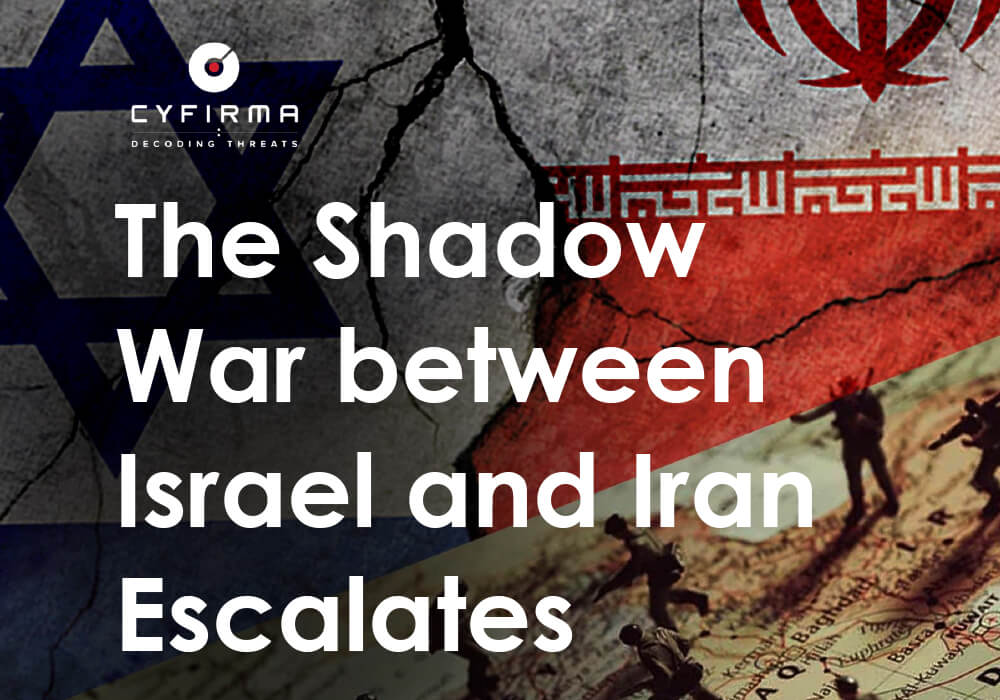
The shadow war between Israel and Iran is escalating, but despite unprecedented attacks, both sides are so far trying to keep the conflict below the level of open war.
According to Israeli military officials, 36 cruise missiles, 110 ballistic missiles, and 185 drones were launched in Saturday’s attack on Israel. Most of them came directly from Iran, with only a small number launched by Iranian proxy forces from Iraq and Yemen. This attack marked an escalation of direct conflict between the two countries, which have so far exchanged most blows indirectly. The Israeli air force, in cooperation with the Jordanians, Americans, British, French and Saudis, managed to destroy most of the drones and missiles outside Israeli airspace. Ballistic missiles posed the greatest threat, however, most of them were eliminated by advanced Arrow 3 missiles outside the earth’s atmosphere, although a few penetrated air defenses and hit the Nevatim military air base in southern Israel, causing minor damage. The world is now awaiting a response.
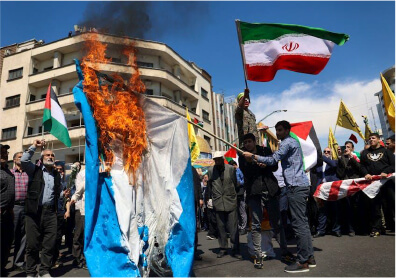
Iran arguably signaled the attack in advance: in diplomatic circles, Israel’s Western allies were allegedly told that Iran intended to respond in a “precisely measured” manner to the alleged Israeli air raid on its consulate in Damascus. Diplomats and analysts surmised that Iran was likely to demonstrate a show of force to deter Israel from pursuing the commanders of the Iranian Revolutionary Guards (who organize militias and terrorist cells in neighboring countries that attack Israel and the U.S.). The Iranian attack additionally allowed Tehran to ‘save face’, without provoking open war with Israel or the US (an unfavourable outcome for many reasons, but particularly since the regime in Tehran is facing growing domestic instability, as our analysts have recently reported).
It’s claimed that Iran was hoping “to exhaust Israel by creating psychological insecurity”, but the real objective was to allow time to organize defenses to prevent the extent of damage that may cause an Israeli escalation. Iran (with its proxy forces in other countries), the US, and Israel have already played through a similar scenario earlier this year.
In late January, three U.S. military personnel were killed in a drone attack which was carried out by Iraqi Shiite militias linked to Iran. It was one of more than 160 similar attacks on US targets in Iraq and Syria since October 7th, 2023, when Hamas launched a new round of war with Israel. In response, the United States hit 85 targets of Iranian proxy forces, stoking fears of an even broader regional conflict in the Middle East.
The retaliatory US strikes were signaled in advance, and came almost a week after the incident in Jordan, giving the Iranian Revolutionary Guard Corps (IRGC) enough time to withdraw personnel and equipment. Fearing a U.S. response, Iran subsequently embarked on a de-escalation of tensions; Tehran-dominated militias in Iraq declared a unilateral ceasefire, and the Revolutionary Guards officially announced the withdrawal of their personnel from the region. Some argue that this situation was then exploited by Israel, with whom Iran has been waging a shadow war for decades.
At first sight, the Iranian attack on Israel may have appeared to be an opening step to a broader physical conflict, but others contend that in reality, it was not only more of a gesture to Israel and the United States but also toward the Iranian proxy forces, before which Tehran could otherwise face reputational damage. The attack was calibrated to seem like a declaration of willingness to escalate but in fact was launched only when Israel and its allies had fully mobilised their defences and the risk of major damage was relatively low. Had the Iranians carried out the same attack on April 2nd, 2024, the day after the bombing of the Damascus consulate, and before Israel had time to prepare, the damage would most likely have been significantly greater. Nevertheless, the use of ballistic missiles demonstrated Iran’s readiness to inflict significant damage that might otherwise occur at a later date.
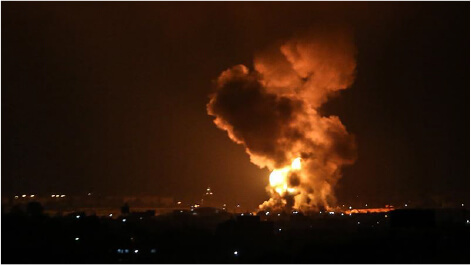
Iran and Israel attack each other regularly, but mostly without openly declaring the attacks (and, in the case of Iran, usually indirectly, thereby avoiding escalation to an all-out conflict). Amid the endless fighting between Israel and Iran-backed groups such as Hamas, Hezbollah and other militant Islamists, however, the shadow war has entered a new and more dangerous phase: most agree that Iran’s goal appears to become the dominant power in the region. To this end, it is trying to oust the United States, which is acting as the security guarantor of the Arab states that are the primary rival of Shi’ite Iran, in its attempt to dominate the Islamic world. The struggle with Israel is therefore part of their struggle not only for regional dominance but also an ideological demand of the clerical class in control of the Iranian regime.
Strategists contend that Iran’s strategy is to arm not only Shiite militias in the neighboring states – particularly in Iraq, Syria, Lebanon and Yemen – but also Sunni extremists in Palestine, which it controls through its Revolutionary Guards (which it then uses to attack its enemies, and to dominate domestic politics of their respective countries). While the Houthis in Yemen are relatively autonomous, their activity is influenced by Tehran mainly through the volume of arms supplies. Arguably Tehran’s most valuable asset is the Hezbollah movement, which can also serve as a scapegoat for attacks by Iranian proxy forces. Israel has repeatedly attacked not only Iranian arms supplies intended for sworn enemies of Israel, but also increasingly openly, the Revolutionary Guard commanders.
On April 1st, 2024, two unprecedented assaults occurred. Al-Moqawamat al-Islamiat fi al-Iraq (the Islamic Resistance in Iraq, a group claiming to represent the various Shi’ite militias under Iranian influence) attacked a state-of-the-art Israeli corvette docked in Eilat using an Iranian drone, demonstrating a sophisticated ability to conduct precision strikes at long range, this was the arguably the beginning of the current situation, and the alleged strike on the Iranian consulate building.
The airstrike killed seven people, including General Muhammad Reza Zahedi, who was the commander of the “Quds Force”, the expeditionary wing of the Revolutionary Guards (IRGC) which safeguards the Iranian regime at home and is tasked with trying to export the Iranian revolution abroad. Zahedi served for years as the IRGC’s operational commander in Syria and Lebanon and was close to Hassan Nasrallah, the leader of Lebanon’s Hezbollah movement. His deputy and five other senior Revolutionary Guard officers were also killed in the blast. Zahedi is the highest-ranking Iranian commander to be killed since the US assassination of Qassem Suleimani in 2020: Iran’s ambassador to Syria said Tehran’s response would be “harsh”, but while direct action had not followed similar sentiments uttered previously, it was now clear within diplomatic circles that an Iranian response would follow, and this time directly.
It is reported that the Israelis believe that Iran could not afford to let the situation in the region escalate into open war due to the precarious position the Tehrani regime is in at home. Israel was already stepping up its active defense against Iranian activities before the bloody October 7th attack by Iran-backed Hamas, but now it is apparently about to take the gloves off altogether.
In November 2021, Israel claimed responsibility for the murder of Mohsen Fakhrizadeh (a figure within their nuclear program), followed by the assassination of IRGC Colonel Hassan Khodayi in May 2022. In July 2021, an oil tanker operated by an Israeli shipping company was attacked off the coast of Oman, killing two crew members. The attack was likely carried out by several Iranian drones that crashed into the living quarters below the ship’s bridge. Iran has not explicitly claimed responsibility, but state television described the attack as a response to an Israeli strike in Syria.
Late last year, Iran accused Israel of killing General Sayyid Razi Mousavi, a close associate of Qassim Suleimani, who was allegedly assigned to oversee arms deliveries to Hezbollah, in a missile attack near Damascus. In January, an explosion on the outskirts of Beirut killed Salih Aouri, the most senior Hamas leader to be killed since the October 7th Hamas attack on Israel, when Israel declared its intention to destroy the organization completely. It was the first such assassination of a senior Hamas leader outside the West Bank and Gaza in recent years.
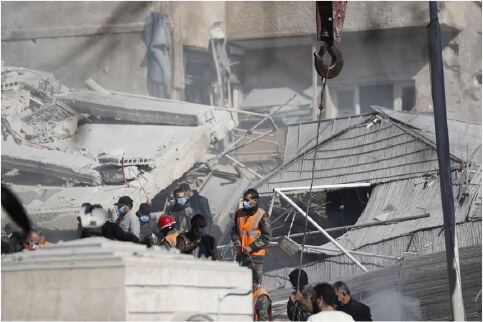
Hezbollah has stepped up its attacks on Israel on Lebanon’s southern border, following the death of Salih Aouri, with the Israeli army killing several Hezbollah commanders and fighters in Lebanon in retaliation. In January, there was an air strike on Iranian targets in Damascus which bore all the hallmarks of an Israeli operation, and in which a number of senior Iranian military officials – including the head of intelligence for the Quds Force in Syria and his deputy – were killed. Iraqi proxy militias in Iraq subsequently sent a salvo of drones into neighbouring Jordan, where three members of the US military were killed and at least 34 others injured.
February and March were again marked by probable Israeli strikes on Hezbollah and Hamas targets in Lebanon, and also on the Syrian army complex near Aleppo, killing 36 Syrian soldiers and seven Hezbollah fighters. The country’s Defence Minister Yoav Gallant wrote on social media: “We will pursue Hezbollah wherever it operates, and we will increase the pressure and pace of attacks.”
The U.S. administration has been making efforts to avoid all-out war in the Middle East, especially while Biden is trying to prop up Ukraine, hold China back from an invasion of Taiwan, and at the same time campaign for re-election. Washington’s tacit agreement with Tehran to ease friction last summer was intended to put off a wide regional crisis, but without giving Iran formal sanctions relief, which would portray the administration as weak ahead of the election.
The Israeli leadership, however, apparently believes it has a rare opportunity to degrade Iran’s proxy forces in the region and punish Tehran for its role in attacks on Israel, while Iran is in no shape to afford a major conflict. Should the conflict go too far, however, the region could find itself in a much larger and more chaotic conflict that would inevitably affect (at the very least) the economic stability of the entire world.
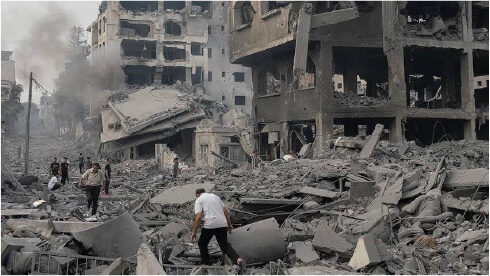
Iran has signaled that the regime is content with its salvo as a response to the attack on its embassy, and vowed not to escalate further in kinetic means unless attacked directly. Israel, on the other hand, has vowed to respond to Iran’s unprecedented attack. However, the war cabinet seems to be divided. The U.S. administration has urged caution, and warned that an escalation wouldn’t serve any nation’s interests, reminding Israeli officials that the U.S. won’t support a counterattack on Iran.
Israeli officials have reportedly been postponing a counter-attack: Prime Minister Netanyahu told foreign ministers that Israel will respond, but in a “thoughtful and calculated way”, emphasizing the need to finish the fight against Hamas in Gaza, all of which is increasingly opening the possibility of a large-scale cyber exchange between the two countries.
Some members of the Israeli cabinet appear reluctant to open another war front, which might push them to favor a lower-end response against Iran, which would suggest kinetic attacks against Iranian proxies and a combination of cyberattacks and sabotage in Iran.
A large-scale paralyzing cyber attack shortly after Iranian drones and missiles interception would further demonstrate Israeli technological superiority over Iran.
Sabotage of Iran’s military facilities or a cyberattack on the nuclear program would not only send a message to Tehran but could cause another hit to Tehran’s international credibility. Israel has conducted these types of attacks in the past, such as the 2021 sabotage of the Natanz enrichment site, and the 2009 Stuxnet cyber attack.
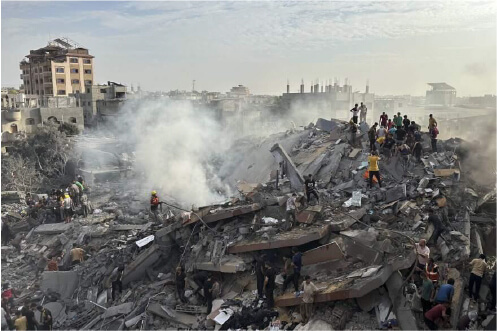
Should Israel choose kinetic strikes, Iran may try to retaliate against Israeli backers and security partners, in a deniable way. Iran has concluded that the Houthis’ experiment in the Red Sea has been so successful that it bears repeating in the Mediterranean and other waterways. “They shall soon await the closure of the Mediterranean Sea, [the Strait of] Gibraltar and other waterways,” announced the coordinating commander of Iran’s Islamic Revolutionary Guard to Iranian media on December 23rd, 2023. Since Iran does not possess kinetic strike capability to strike targets that far, we can assume Iran’s cyber capabilities are being referred to.
In line with our previous assessment, in case of an attack on Iran, Tehran would be more likely than ever to use its cyber capabilities to attack critical infrastructure, especially in countries deemed supportive of Israel and on infrastructure important for international commerce. Further, as we have observed in this report, Iran can direct hacktivists into preparing further attacks.